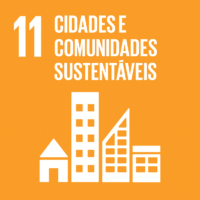Ciência-IUL
Publicações
Descrição Detalhada da Publicação
Título Revista
Journal of Aesthetics & Culture
Ano (publicação definitiva)
2019
Língua
Inglês
País
Reino Unido
Mais Informação
Web of Science®
Scopus
Google Scholar
Abstract/Resumo
Streets-in-the-sky were conceptualized by architects Alison and Peter Smithson as collective
space, an articulation between individual and civitas. This essay argues that streets-in-the-sky
are a particularly democratic type of urban element, which also has many positive sustainability potentials. The first use of this concept was in the Smithson’s unbuilt Golden Lane
estate (1952), which became a hallmark in post-WW2 debates over urban structure, domesticity, and social housing. Park Hill, the first streets-in-the-sky estate by Jack Lynn and Ivor
Smith, was a success in the 1960s. The Smithsons continued to explore the idea in several
urban projects, only to put it to built form in Robin Hood Gardens (1968–1972). These estates
have adapted streets-in-the-sky and afterward evolved to very different states of maturity.
While Park Hill is a refurbished Grade II listed building, Robin Hood Gardens is awaiting full
demolition. Streets-in-the-sky were generally abandoned in more recent housing schemes,
but the situation of these estates suggests that no consensus exists as to their urban value.
Here, we analyze streets-in-the-sky at the time of their emergence as a concept. To assess
their cultural, morphological, social, and political implications, we explore their development
in built and unbuilt housing schemes, using the above mentioned case-studies to point out
how streets-in-the-sky evolved, including their possible role in important urban debates of
the present. Since many social housing estates employing streets-in-the-sky have been and
continue to be demolished in redevelopment projects, we aim to understand what losses—
aesthetic, functional, and environmental—may be implied in the decimation of this element
of urban form.
Agradecimentos/Acknowledgements
The authors would like to thank the reviewers for suggestions on the original version, and also to the Smithson Family Collection, John Cameron Mitchell and Seesaw Films for kindly authorizing the reproduction of the images in this essay.
Palavras-chave
Golden Lane,Park Hill,Robin Hood Gardens,Alison and Peter Smithson,Urban form,Mobility,Council housing,Sustainability,Democracy,Neoliberalism
Classificação Fields of Science and Technology
- Geografia Económica e Social - Ciências Sociais
- Artes - Humanidades
- Outras Humanidades - Humanidades
Registos de financiamentos
| Referência de financiamento | Entidade Financiadora |
|---|---|
| POCI-01-0145-FEDER-016431 | European Regional Development Fund (FEDER), throught COMPETE2020 - Competitiveness and Internationalization Operational Program (POCI) and by National funds throught the Foundation for Science and Technology FCT |
| UID/SOC/03127/2013 | Fundação para a Ciência e a Tecnologia |
Contribuições para os Objetivos do Desenvolvimento Sustentável das Nações Unidas
Com o objetivo de aumentar a investigação direcionada para o cumprimento dos Objetivos do Desenvolvimento Sustentável para 2030 das Nações Unidas, é disponibilizada no Ciência-IUL a possibilidade de associação, quando aplicável, dos artigos científicos aos Objetivos do Desenvolvimento Sustentável. Estes são os Objetivos do Desenvolvimento Sustentável identificados pelo(s) autor(es) para esta publicação. Para uma informação detalhada dos Objetivos do Desenvolvimento Sustentável, clique aqui.

 English
English



